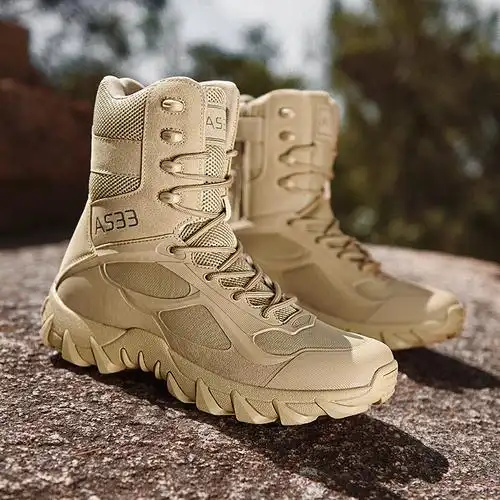Learn how to partner with low-MOQ shoe factories for custom designs, even with a single pair. Discover cost-effective strategies, material selection, and QC protocols for startup-friendly footwear production.
—
Introduction
The rise of on-demand manufacturing has revolutionized the footwear industry, enabling brands to launch with low MOQs (minimum order quantities) as low as 1 pair. For startups, indie designers, and small businesses, this model eliminates inventory risks and validates product concepts before scaling. This guide explores how to source custom shoes with minimal quantities, optimize costs, and partner with flexible factories.
—
Why Choose Low-MOQ Shoe Manufacturing?
1. Zero Inventory Risk
Producing one pair at a time allows brands to:
– Test market demand without bulk commitments.
– Avoid overstocking and markdowns.
– Iterate designs based on customer feedback.
2. Affordable Customization
Low-MOQ factories specialize in:
– Modular tooling (e.g., interchangeable lasts, snap-on heels).
– Digital prototyping (3D rendering instead of physical samples).
– Small-batch material sourcing (e.g., eco-friendly TPU, organic cotton).
3. Scalability
Start with 1 pair and scale to 1,000+ using the same factory, molds, and workflows.
—
Step-by-Step Process for Low-MOQ Shoe Production
Phase 1: Design & Prototyping
– Submit ideas: Sketches, CAD files, or inspiration boards (e.g., Pinterest mood boards).
– Factory role:
– Convert ideas into 3D models (cost: $100–$300).
– Use CNC laser cutting for rapid iterations (lead time: 3–5 days).
Phase 2: Material Selection
Factories offer cost-effective options for small batches:
– Upper materials: Synthetic microfiber ($1.2–$2.5 per sq.m) vs. leather ($3–$5).
– Outsoles: Recycled TPU ($0.8–$1.5 per pair) vs. rubber ($1.2–$2).
– Sustainability: Ocean-bound plastics or algae-based foams.
Phase 3: Production & QC
– MOQ flexibility:
– 1–5 pairs: Artisan handcrafting for prototypes.
– 50–100 pairs: CNC machining and digital printing.
– QC protocols:
– Pre-shipment inspection (AQL 5.0 for small batches).
– Video audits of production lines.
—
Key Challenges & Solutions
Challenge 1: High Per-Pair Costs
– Solution:
– Use multi-cavity molds (splits costs across orders).
– Opt for digital printing instead of embroidery (saves $0.5–$1/pair).
Challenge 2: Limited Design Complexity
– Solution: Simplify constructions (e.g., avoid glued-on logos; use heat-transfer labels).
Challenge 3: Sizing Accuracy
– Solution: Factories integrate 3D foot scanning into mold design.
—
Cost Breakdown & ROI Optimization
Component Cost Range CostSaving Strategies
Prototyping $300–$800 per design Reuse 3D models for new colorways
Material Costs $5–$15 per pair Bulk buy recycled materials
Shipping (FOB) $3–$8 per pair Consolidate orders for LCL shipping
Packaging $1–$3 per pair Minimalist branding reduces costs
ROI Tip: Offer limited-edition “maker’s batches” to justify premium pricing.
—
FAQs: Low-MOQ Shoe Production
Q: Can I produce a single pair?
A: Yes, but factories charge a $200–$500 setup fee for art-to-product conversion.
Q: What’s the lead time for 10 pairs?
A: Handcrafted orders take 7–10 days; CNC-machined designs require 10–15 days.
Q: How to ensure quality on small batches?
A: Demand video QC sessions and request defect rates ≤3% (negotiable for first orders).
—
Conclusion
Low-MOQ shoe manufacturing democratizes fashion innovation, allowing startups to launch bold designs without financial risk. By partnering with factories offering modular tooling, digital prototyping, and transparent pricing, brands can scale sustainably while maintaining creative control. Start by sharing your vision with a verified low-MOQ specialist today.
— Optimization Strategy:
– Primary Keywords: “one pair shoe manufacturing,” “low MOQ shoe factory,” “small batch custom sneakers”
– Secondary Keywords: “custom shoe prototyping,” “on-demand footwear production,” “sustainable low-volume shoes”
– Semantic Variations: Terms like “how to start a shoe brand with no inventory,” “single pair shoe printing,” “bespoke footwear manufacturer” align with buyer intent.
– Internal Linking: Connect to related guides (e.g., “How to Use 3D Printing for Shoe Prototypes”).
– Content Refresh: Update cost tables quarterly to reflect material price trends.
This structure enhances search visibility for niche queries while positioning your factory as an agile partner for innovative, small-scale footwear ventures.
Article link:https://www.vlefooena.com/manufacturer/3667/


No reply content